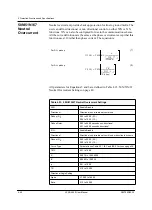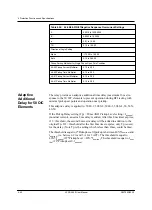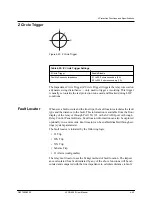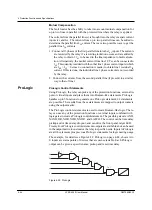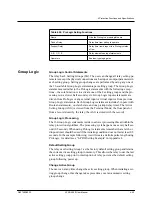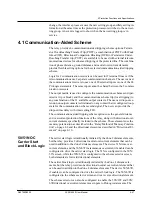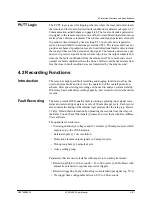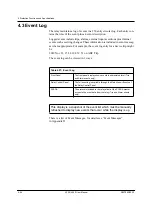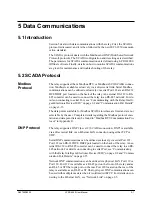
4 Protection Functions and Specifications
D02706R02.30
L-PRO 4000 User Manual
4-47
change, the interface processor uses the new setting group ancillary setting in-
formation at the same time as the protection processor switches to the new set-
ting group. An event is logged to show when the new setting group is in
service.
4.1 Communication-Aided Scheme
The relay provides 4 communication aided tripping scheme options. Permis-
sive Over-Reaching Transfer Trip (POTT), a combination of POTT with Weak
Infeed (WI), Directional Comparison Blocking (DCB) or Permissive Under-
Reaching Transfer trip (PUTT) are available to be used with external telecom-
munications devices for enhanced tripping of the protected line. The combina-
tion of phase distance, ground distance and neutral overcurrent elements
provide flexible setting options for the selected communication aided tripping
scheme.
Logic for 2 communication receivers can be used for 3 terminal lines or if the
telecommunications use 2 separate communication channels. The user can set
the communications receivers to use one of 20 external inputs or one of the 24
ProLogic statements. The same input cannot be shared between the 2 commu-
nication receivers.
The output matrix is used to configure the communications scheme send (per-
missive trip or block), and the communications scheme trip (local tripping) to
any combination of the 21 available output contacts. The user-set dropout ex-
tension on output contacts is eliminated on any contact that is configured to op-
erate for the communication scheme send signal; The user can provide the
dropout time delay with timer setting TD3.
The communications aided tripping scheme options use the general distance
and overcurrent protection functions of the relay, along with directional over-
current elements specifically included in the scheme. These elements use the
memory polarization as described in the “Relay Method of Memory Polariza-
tion” on page 4-8 and the directional element as described in “Directional El-
ement” on page 4-10.
50/51N OC
Carrier Start
and Block Logic
The carrier start logic is traditionally initiated by the Zone 2 distance elements,
but the relay provides 2 directional neutral overcurrent elements that can be
used in addition to the Zone 2 distance elements. The device 51N time over-
current element, and the 50N/67F instantaneous overcurrent if enabled can be
configured to drive the carrier start logic. The 51N is configured in the 50N/
51N screen, while the 50N/67F is configured in the scheme selector screen,
both elements are forward directional elements.
The carrier block logic is traditionally initiated by the Zone 4 distance ele-
ments, but the relay provides one directional neutral overcurrent element that
can be used in addition to the Zone 4 distance elements. The device 50N/67R,
if enabled, can be configured to drive the carrier block logic. The 50N/67R is
configured in the scheme selector screen and is a reverse directional element.
The scheme selector can also be configured to enable the 50N/67F and 50N/
67R directional overcurrent elements as inputs to ProLogic statements. The
Summary of Contents for L-PRO 4000
Page 1: ...L PRO 4000 Transmission Line Protection Relay User Manual Version 2 3 Rev 0...
Page 2: ......
Page 4: ......
Page 8: ......
Page 10: ......
Page 14: ......
Page 40: ......
Page 50: ......
Page 116: ......
Page 146: ......
Page 218: ......
Page 252: ...Appendix B IED Settings and Ranges Appendix B 34 L PRO 4000 User Manual D02706R02 30...
Page 260: ......
Page 270: ......
Page 302: ......
Page 308: ......
Page 310: ......
Page 312: ......








